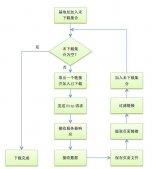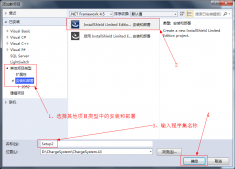本文实例讲述了C#使用Object类实现栈的方法。分享给大家供大家参考,具体如下:
Stack类的代码:
|
1
2
3
4
5
6
7
8
9
10
11
12
13
14
15
16
17
18
19
20
21
22
23
24
25
26
27
28
29
30
31
32
33
34
35
36
37
38
39
40
41
42
43
44
45
46
47
48
49
50
51
52
53
54
55
56
57
58
59
60
61
|
using System;using System.Collections.Generic;using System.Linq;using System.Text;namespace 使用Object类实现后进先出队列{ class Stack { private Object[] _items; public Object[] Items { get { return this._items; } set { this._items = value; } } //将对象压入 public void Push(Object obj) { //第一次压入时,进行初始化,长度为1 if (this._items == null) { this._items = new Object[1]; this._items[0] = obj; } else { int count = this._items.Length; Object[] objTemp = this._items; this._items = new Object[count + 1]; int i = 0; foreach (Object o in objTemp) { this._items[i++] = o; } this._items[i] = obj; } } //按后入先出取出 public Object Pop() { //为初始化或长度为0时,无法取出任何元素 if (this._items == null||this._items.Length == 0) return null; else { Object obj = this._items[this._items.Length - 1]; //删除最后一个元素 this.DeleteLastObj(); return obj; } } private void DeleteLastObj() { Object[] objTemp = new Object[this._items.Length - 1]; for (int i = 0; i < this._items.Length - 1; i++) { objTemp[i] = this._items[i]; } this._items = objTemp; } }} |
窗体检测代码:
|
1
2
3
4
5
6
7
8
9
10
11
12
13
14
15
16
17
18
19
20
21
22
23
24
25
26
27
28
29
30
31
32
33
34
35
36
37
38
39
40
41
42
43
44
45
46
47
48
49
50
51
52
53
54
55
56
57
58
|
using System;using System.Collections.Generic;using System.ComponentModel;using System.Data;using System.Drawing;using System.Linq;using System.Text;using System.Windows.Forms;namespace 使用Object类实现后进先出队列{ public partial class Form1 : Form { public Form1() { InitializeComponent(); } private Stack stack = new Stack(); private Stack<string> stackGeneric= new Stack<string>(); private void button1_Click(object sender, EventArgs e) { stack.Push(this.textBox1.Text); } private void button2_Click(object sender, EventArgs e) { Object[] objs = stack.Items; foreach(Object o in objs) { Console.WriteLine(o.ToString()); } } private void button1_Click_1(object sender, EventArgs e) { try { Console.WriteLine(this.stack.Pop().ToString()); } catch { Console.WriteLine("null"); } } private void button3_Click(object sender, EventArgs e) { this.stackGeneric.Push(this.textBox2.Text); } private void button4_Click(object sender, EventArgs e) { try { Console.WriteLine(this.stackGeneric.Pop()); } catch (InvalidOperationException) { Console.WriteLine("null"); } } }} |
1.使用Stack类的时候形成很多不可控的资源占用,等待GC回收;
2.类型不安全,任何类型的数据都可以装入object
3.可以设置Object数组的一个初始长度,而不必每次压入或者取出的时候都去临时改变数组的长度,具体做法是,通过Stack的构造函数生成一个指定长度的数组,在压入和取出的时候,并不对这个初始化的长度进行调整,而只是用一个int数值intPoint记录目前所拥有的值的位置,对已经取出的object,实际并没有把它删除,只是不去管它而已。这样做的好处是,一次设定数组长度,使用一个类似指针的东西定位“有效”元素,这种方法更可取。
实际上,.net2.0以上提供了Stack<>泛型类可以直接完成栈,使用非常方便,而且避免了强制类型转换带来的损耗,实现了类型安全。第二段代码中已经给出使用方式,非常简单。
希望本文所述对大家C#程序设计有所帮助。















